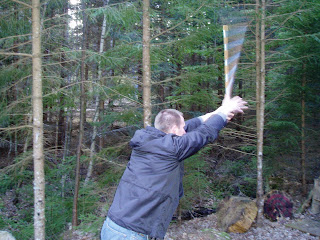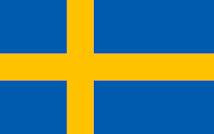



 In an effort to continue the welcome to our new Southern California-based readers of Linköpinglivin’, this week’s entry explores the things that unite two places vastly different from one another, Sweden and Southern California.
In an effort to continue the welcome to our new Southern California-based readers of Linköpinglivin’, this week’s entry explores the things that unite two places vastly different from one another, Sweden and Southern California.Being uniquely qualified to, somehow, capture commonalities between two places as far away in climate as they are in distance (but, relatively speaking, sharing some similar cultural traits as two economically-strong, Western places), perhaps you can indulge me as I share this latest “Top 10” list on Linköpinglivin’:
The Top 10 things Sweden and Southern California have in common are:
10. A love of the sun (some just have it more than others).
9. An IKEA around every corner…
8. A love of coffee (some like it hot, others “iced”).
7. A great diversity of topography (mountains, water, farmland, desert…oh, wait).
6. The presence of reindeer at Christmas (one imaginary, the other real).
5. Beautiful people (but generally way too image-conscious).
4. A love of Swedish Fish (One is a brilliantly-marketed American candy and the other is fish caught in or near Sweden.)
3. A reputation to their geographical neighbors as being laid back, easy-going and politically left of center.
2. They both love their “football” teams…
1. And the #1 thing Sweden and Southern California have in common is:
….is….
....um......
Oh, forget it. Sweden and Southern California have only nine things in common (and even some of those were a stretch). This undoubtedly comes as a relief to people from both places.
Pictures above:
1. Don't be fooled. Sweden has approximately twice the coastline of California. This is Motola, a town near Linköping, on a nice summer's eve.
2. Okay, this is California. Specifically, me diving for a Frisbee in Santa Barbara last weekend.
3. As opposed to the American-based Santa & his reindeer story at Christmastime, Sweden actually has reindeer, and lots of them, in the north (and reindeer is delicious, by the way!).
4. Swedish Fish is an American candy almost as well loved as Ahlgren's Bilar in Sweden, but to the surprise of most Americans, Swedes have never heard of Swedish Fish.
5. One of the best parts of being a foreigner is getting together with other foreigners and sharing a common bond (as well as making fun of Swedes). Represented around the table here is Turkey, France, Singapore, the U.S. and....Sweden.
















